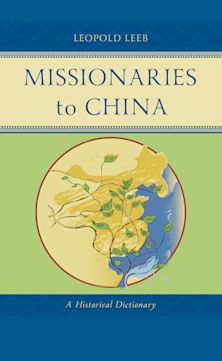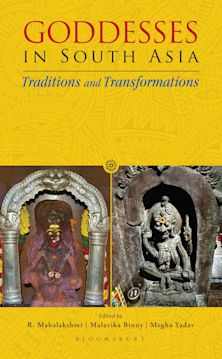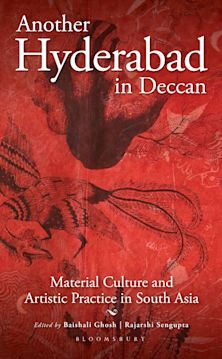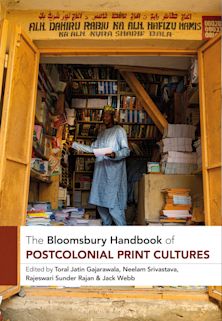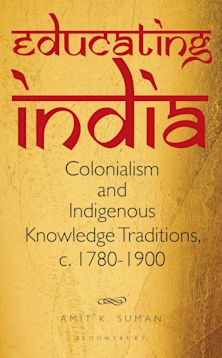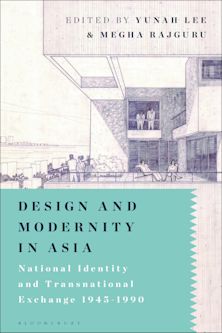- Home
- ACADEMIC
- History
- Asian History
- Development-Induced Displacement in India and China
Development-Induced Displacement in India and China
A Comparative Look at the Burdens of Growth
Florence Padovani (Anthology Editor) , Joël Cabalion (Contributor) , Kam Wing Chan (Contributor) , Yingfang Chen (Contributor) , Rikil Chyrmang (Contributor) , Samir Kumar Das (Contributor) , Vijay Korra (Contributor) , Guangming Liu (Contributor) , Florence Padovani (Contributor) , S. Irudaya Rajan (Contributor) , Marie-Caroline Saglio-Yatzimirsky (Contributor) , Hongyuan Song (Contributor) , Xing Ying (Contributor) , Michael M. Cernea (Foreword)
Development-Induced Displacement in India and China
A Comparative Look at the Burdens of Growth
Florence Padovani (Anthology Editor) , Joël Cabalion (Contributor) , Kam Wing Chan (Contributor) , Yingfang Chen (Contributor) , Rikil Chyrmang (Contributor) , Samir Kumar Das (Contributor) , Vijay Korra (Contributor) , Guangming Liu (Contributor) , Florence Padovani (Contributor) , S. Irudaya Rajan (Contributor) , Marie-Caroline Saglio-Yatzimirsky (Contributor) , Hongyuan Song (Contributor) , Xing Ying (Contributor) , Michael M. Cernea (Foreword)
You must sign in to add this item to your wishlist. Please sign in or create an account
Description
The world seems to have recently discovered India and China as major players in Asia, and political and economic connections between the two countries are rapidly growing. Beyond the fashionable phenomenon, the two countries have much in common and many shared experiences. Both are developing countries with dynamic economies focused on lifting their people out of poverty. There are also differences as well, as India is a democracy while China is an autocratic state, and the speed of economic growth is much higher in India. This collection provides a comparative analysis of development-induced migration in India and China caused by urbanization and dam construction. The contributors include scholars from both countries working in both academia and consultancy positions.
Table of Contents
Preface
Acknowledgments
Introduction, Florence Padovani
Part I: Development Project-Induced Migration: A State Mission
Chapter 1: Migration and Development Strategies in Post-1949 China, Kam Wing Chan
Chapter 2: A Gaze without a Gaze: State, Development, and the Internally Displaced Persons in Contemporary India, Samir Kumar Das
Part II: The Organization of the Political and Administrative Structures Dealing with Migrants
Chapter 3: An Analysis of Policies on the Migration of Rural Labor, Hongyuan Song and Guangming Liu
Chapter 4: Internal Migration in India: Dealing with the Political and Administrative Organization, S. Irudaya Rajan, Vijay Korra, and Rikil Chyrmang
Part III: Mumbay and Shanghai: Two Cities Developing at High Speed: Analysis of the Social Impact
Chapter 5: “Shanghai Speed”: The Development System and Urban Dwellers’ Experiences, Yingfang Chen
Chapter 6: Shanghaiing Mumbai: Resettlement Programs and Social Cost of Urban Development Policies, Marie-Caroline Saglio-Yatzimirsky
Part IV: The Gosikhurd and Three Gorges Dams: The Social Cost of Energy
Chapter 7: State Science and Resettlement Knowledge: The Gosikhurd Dam in Vidarbha, Joël Cabalion
Chapter 8: Analysis of the Social Implications of the Three Gorges Dam Project, Florence Padovani
Chapter 9: In China: Analysis of the Interest Expression Mechanisms amongst Chinese Dam Resettlees: An Account of the First Case Linked to the Three Gorges Resettlement, Xing Ying
Product details
| Published | Aug 29 2016 |
|---|---|
| Format | Ebook (Epub & Mobi) |
| Edition | 1st |
| Extent | 280 |
| ISBN | 9781498529044 |
| Imprint | Lexington Books |
| Illustrations | 10 BW Photos, 17 Tables |
| Publisher | Bloomsbury Publishing |
About the contributors
Reviews
-
Florence Padovani has assembled an amazing set of papers focused on the effects of displacement from urban development and dam construction in China and India, and has very skillfully presented them in a comparative perspective in this superb book. Comparing such experiences is never easy, particularly in situations where the challenges of development-induced displacement are similar, but where the approaches followed to address them diverge hugely. A path-breaking study, this book will be of great interest to resettlement researchers, practitioners, and also students everywhere, not in India and China alone.
Hari Mohan Mathur, Council for Social Development, New Delhi
-
This valuable comparative study—the first of its kind on the topic of development-induced displacement and population resettlement in contemporary China and India—examines how these two Asian giants handle the political, administrative, and social challenges of urban development and dam construction, using case studies of two growing cities, Mumbai and Shanghai, and two dams, Gosikhurd in India and Three Gorges in China. The contributors, who are all leading international scholars, analyze the concepts of expropriation, eviction, impoverishment risks, compensation, and rehabilitation. Bringing new arguments and data relevant to the current, sensitive and complex issue of the forced displacement and resettlement of populations owing to development projects, this book is a great resource for researchers, policymakers, and students.
Véronique Lassailly-Jacob, University of Poitiers
















